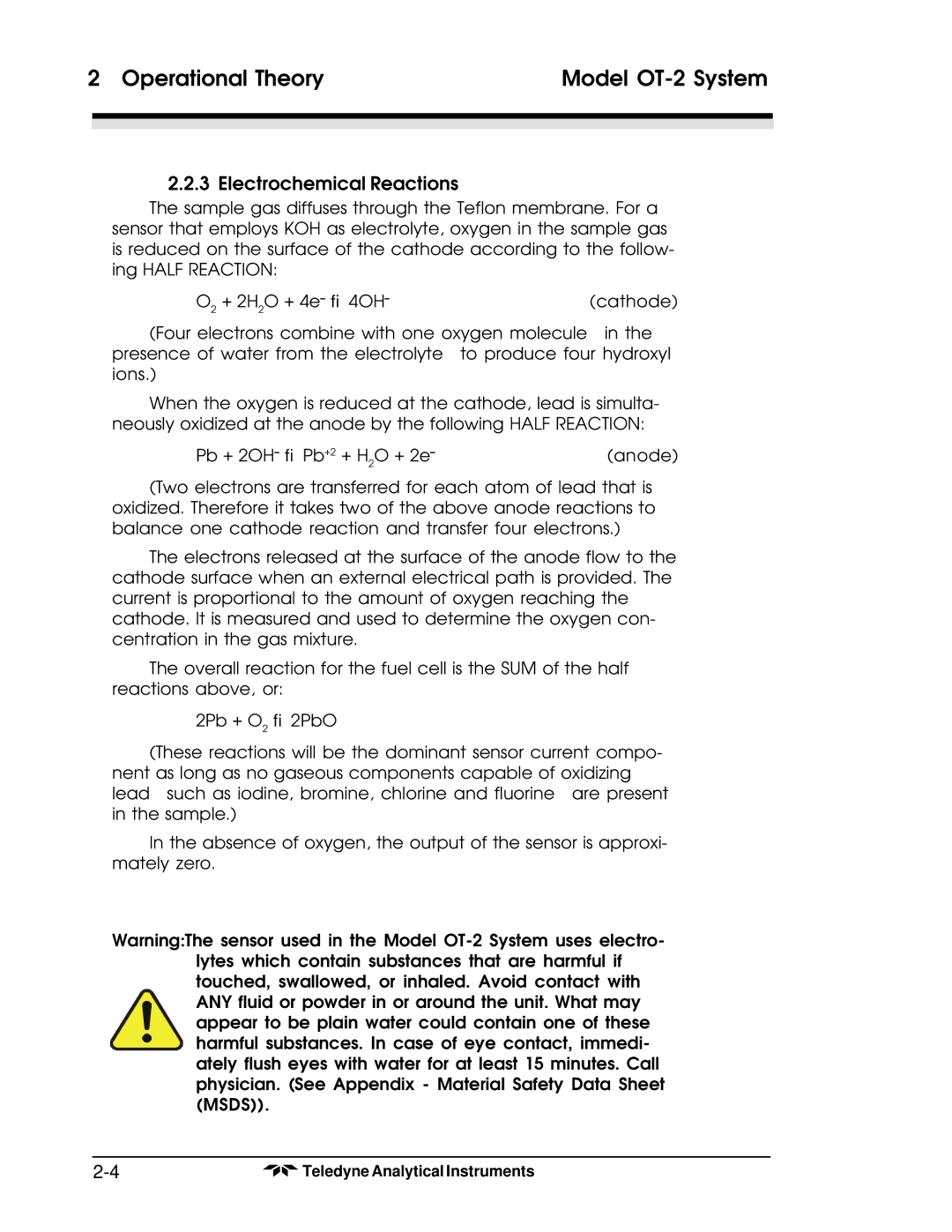
2 Operational Theory | Model | |
|
|
|
|
|
|
2.2.3 Electrochemical Reactions
The sample gas diffuses through the Teflon membrane. For a sensor that employs KOH as electrolyte, oxygen in the sample gas is reduced on the surface of the cathode according to the follow- ing HALF REACTION:
O2 + 2H2O + 4e– ® 4OH– | (cathode) |
(Four electrons combine with one oxygen
When the oxygen is reduced at the cathode, lead is simulta- neously oxidized at the anode by the following HALF REACTION:
Pb + 2OH– ® Pb+2 + H2O + 2e– | (anode) |
(Two electrons are transferred for each atom of lead that is oxidized. Therefore it takes two of the above anode reactions to balance one cathode reaction and transfer four electrons.)
The electrons released at the surface of the anode flow to the cathode surface when an external electrical path is provided. The current is proportional to the amount of oxygen reaching the cathode. It is measured and used to determine the oxygen con- centration in the gas mixture.
The overall reaction for the fuel cell is the SUM of the half reactions above, or:
2Pb + O2 ® 2PbO
(These reactions will be the dominant sensor current compo- nent as long as no gaseous components capable of oxidizing
In the absence of oxygen, the output of the sensor is approxi- mately zero.
Warning:The sensor used in the Model
ANY fluid or powder in or around the unit. What may
appear to be plain water could contain one of these harmful substances. In case of eye contact, immedi- ately flush eyes with water for at least 15 minutes. Call physician. (See Appendix - Material Safety Data Sheet (MSDS)).
Teledyne Analytical Instruments |
